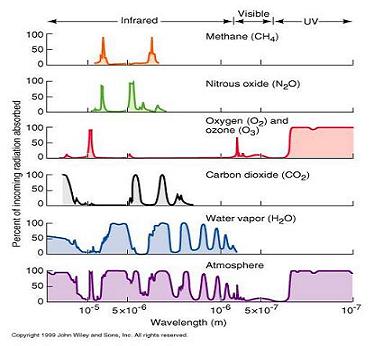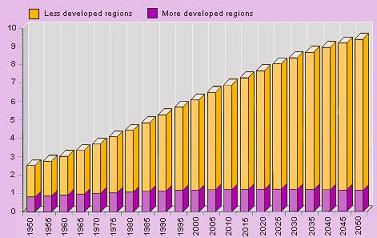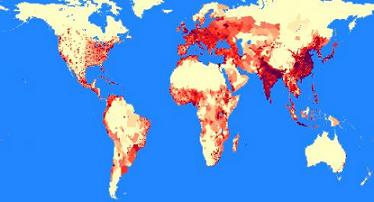|
Parent Article: Arctic and Midwest climate change |
|
Understanding the relevance of measures of temperature. |
by Peter K Anderson
hartlod (nospam) bigpond.com (unverified) |
Current rating: 0
15 Feb 2006
Modified: 06:46:43 PM |
 |
There seems to be a real lack of understanding in how relevant numerous measures of temperature can be in developing any climate model that is VALID and functional when those measures are made is such small time frames.
This fetish for 'temperature' plots is not able to validate opinions of 'global warming' due to inadequate statistical methods being employed. One million data points in the last 30 years is only defining a statistically insignificant time-frame of the overall climate oscillation. 100 Million data points in 50, or 100 years, is of no more help in validating either model or opinion.
If one observes an actual curve in too fine a detail, one might think that one is looking at a linear plot. This is the basis of what if happening; the 'global warmers' have taken a little bit of a curve within an oscillation and made it to be a 'styled' relationship that does not notice the actual process.
Being avoided also is the noted warming/cooling/warming mini oscillation occurring in global climate since 1880. This micro-oscillation has been noted in many comments in many places by many people.
There is also the motion of human population across the surface in line with population growth, as shown in the slide I include here. The alteration of the surface associated with this increase in population has led to alterations of what would be 'pleasant green terrain' to become covered to various densities in coverage of concrete and asphalt.
WE all know that concrete and asphalt get very much hotter than even grassed terrain, and the increase in surface region of concrete and asphalt has led to the small increase in average SURFACE temperatures observed as 0.6 degrees C.
As humanity grows in numbers, the 'western' population will stagnate, and growth in the presently 'lesser developed nations' (ligher color in colum plot) will see sprawl across what is now mostly 'green' covered terrain (view geographical plot with marginal terrain overlayed, Humanity is less likley to produce hebitat in deserts).
From slide 1, you see that the energy that can be incident to the surface is in the lower and upper Visible spectrum, and the lower one third of the UV spectrum. Realise also that the energy in the Gamma and XRay spectrums is deflected by interactions of plasma creation invovling the magnetic field of this planet, so unlike Venus, such Gamma adn Xray energy is not entering our biosphere. Photosynthesis primaryily consumes energy within the lower and upper visible spectrum, leaving only teh energy in teh lower one third of the UV spectrum (NOT REGION) constantly surface incident.
So more concrete and asphalt is reducing the photosynthetic covering in a primary manner, other human activities reducing suchin lessenign degrees. This allows more energy to be free to be producing greater inductance of kinetic energy and a futher rise in average surface temperature. NO possible need to invoke a supposed 'greenhouse effect AT ALL in reality.
WE have barely 200 years of records and even then for only various portion of the region as it were âsettledâ. On a scale of global climate, even one million data points within those 200 years is only defining well a âstatistically insignificant periodâ.
The overall natural climate cycle saw an âIce Ageâ being to revert ~20,000 years ago, which occupies the âtroughâ of the climate oscillation.
Look to:- < http://www.museum.state.il.us/exhibits/ice_ages/ > for more information.
We are all now at, if not even within, the âpeakâ of that oscillation. WE have a dry equatorial zone, with a heavily photosynthetic covering of the temperate zone (if you include the photosynthetic mass so far removed by Humanity within the last 400 years) and warming Polar Regions.
There is no reason to think that the motion of the oscillation peak will progress any faster than through a trough (and its often contained âIce Ageâ) and so âpeak oscillation climate fluctuationsâ could last multiple centuries.
As such the âpeakâ will present shifting behaviors, in as far as Humanity defines âseasonsâ (which need not be considered ânatural and permanentâ being definitions OF Humanity only) without any needed periodicity in these alterations. Rain patterning will alter its density and distribution. Wind and ocean currents will show some disturbances to various degrees.
These will manifest differing behaviors within regions that are NOT 'global' in scale.
One such region is in and around the Gulf of Mexico, which can at this point within the oscillation, produce storms of vast surface coverage from little more energy than currently available. These events are those that open the multiple sea channels along the Florida coastline and nearby environs (New Orleans for example has seen ONE open) which produce the 'Lake Land' that the State of Florida region HAS been in the 'past'.
The present cycle we are within would appear to have persisted for around 2 MILLION years.
WE are placed to notice a âtoppleâ of climate, to observe such a rare event that it night only occur in this manner every ~50,000 years with the âIce Ageâ âin the middleâ, and all we do is try to blame a supposed âgreenhouse effectâ induced by âhumanityâ and use this as a âscareâ to hide opinion behind, as it is being used in attacks on âDesalinationâ and other more obviously politically opinioned rhetoric, like that surrounding the âKyoto Protocolâ. Personally if people wish to believe in a âgreenhouse effectâ I care little, but when they attempt to produce their belief as justification to prevent needed, necessary, practical and efficient remediations to REAL and present problems, my patience dwindles very rapidly, as it does when these same 'beliefs' are used to produce otherwise unsupportable demands for remediation of the presented 'processes' that 'exist' within that 'belief'.
The plots of human population reproduce exactly in shape that seen in 'co2 plots', and it is therefore NOT possible to remove the population attached surface rematerialing produced by the humanity and alterations to planetary surface kinetic energy induction rates. There is then also the inability of CO2 to actually produce behavior that is in any manner consistent with that presented as 'greenhouse behavior' within the supposed 'greenhouse effect'.
It is rapidly becoming evident that the last thing one does to gain understanding of 'climate' is ask a 'climatologist'.
Lastly, the materials involved and the systems used within 'climatology' are all in general use by many of the near 500 MILLION Other tertiary educated individuals who use these materials and systems to produce products every day. This includes attempts to proffer a 'greenhouse effect' as existent, amongst other very obvious flaws in method and interpretations.
There is no closed shop attitude to be tolerated when the method of making the 'shop' is so obviously flawed.
Your's, Peter K. Anderson a.k.a. Hartlod(tm) Member of the Public, Australia.
From the PC of Peter K Anderson
E-Mail: Hartlod (at) bigpond.com
With regard to other common knowledge:-
--------------------
'A chronology of climate change'
During most of the last billion years the Earth did not have permanent ice sheets. Nevertheless, at times large areas of the globe were covered with vast sheets of ice. Such times are known as glaciations. In the past 2 million to 3 million years, the temperature of the Earth has changed (warmed or cooled) at least 17 times, some say 33, with glaciations that last about 100,000 years interrupted by warm periods that last about 10,000 years.
The last glaciation began 70,000 years ago and ended about 10,000 years ago. The Earth was a lot colder than it is now; snow and ice had accumulated on a lot of the land, glaciers existed on large areas and the sea levels were lower.
15,000 years ago: The last glaciation reaches a peak, with continental glaciers that cover a lot of the sub-polar and polar areas of the land areas of Earth. In North America, all of New England and all of the Great Lakes area, most of Ohio, Indiana, Minnesota and the North Dakotas, lie under ice sheets hundreds of meters thick. More than 37 million cubic kilometers of ice was tied up in these global sheets of ice. The average temperature on the surface of the Earth is estimated to have been cooler by approximately 6 degrees Celsius than currently. The sea level was more than 90 meters lower than currently.
15,000 years ago to 6,000 years ago: Global warming begins. The sheets of ice melt, and sea levels rise. Some heat source causes approximately 37 million cubic kilometers of ice to melt in approximately 9,000 years. Around 9,500 years ago, the last of the Northern European sheets of ice leave Scandinavia. Around 7,500 years ago, the last of the American sheets of ice leave Canada. This warming is neither stable nor the same everywhere. There are periods when mountain glaciers advance, and periods when they withdraw. These climatic changes vary extensively from place to place, with some areas affected while others are not. The tendency of warming is global and obvious, but very uneven. The causes of this period of warming are unknown.
8,000 years ago to 4,000 years ago: About 6,000 years ago, temperatures on the surface of Earth are about 3 degrees warmer than currently. The Arctic Ocean is ice-free, and mountain glaciers have disappeared from the mountains of Norway and the Alps in Europe, and from the Rocky Mountains of the United States and Canada. The ocean of the world is some three meters higher than currently. A lot of the present desert of the Sahara has a more humid, savannah-like climate, with giraffes and savannah fauna species.
4,000 years ago to AD 900: Global cooling begins. The Arctic Ocean freezes over, mountain glaciers form once more in the Rocky Mountains, in Norway and in the Alps. The Black Sea freezes over several times, and ice forms on the Nile in Egypt. Northern Europe gets a lot wetter, and the marshes develop again in previously dry areas. The sea level drops to approximately its present level. The temperatures on the surface of the Earth are about 0.5-1 degree cooler than at present. The causes of this period of cooling are unknown.
AD 1000 to 1500: This period has quick, but uneven, warming of the climate of the Northern Hemisphere. The North Atlantic becomes ice-free and Norse exploration as far as North America takes place. The Norse colonies in Greenland even export crop surpluses to Scandinavia. Wine grapes grow in southern Britain. The temperatures are from 3-8 degrees warmer than currently. The period lasts only a brief 500 years. By the year 1500, it has vanished. The Earth experiences as much warming between the 11th and the 13th century as is now predicted by global-warming scientists for the next century. The causes of this period of warming are unknown.
1430 to 1880: This is a period of the fast but uneven cooling of Northern Hemisphere climates. Norwegian glaciers advance to their most distant extension in post-glacial times. The northern forests disappear, to be replaced with tundra. Severe winters characterize a lot of Europe and North America. The channels and rivers get colder, the snows get heavy, and the summers cool and short. The temperatures on the surface of the world are about 0.5-1.5 degrees cooler than present. In the United States, 1816 is known as the "year with no summer". Snow falls in New England in June. The widespread failure of crops and deaths due to hypothermia are common. The causes of this period of cooling are unknown.
1880 to 1940: A period of warming. The mountain glaciers recede and the ice in the Arctic Ocean begins to melt again. The causes of this period of warming are unknown.
1940 to 1977: Cooling period. The temperatures are cooler than currently. Mountain glaciers recede, and some begin to advance. The causes of this period of cooling are unknown.
1977 to present: Warming period. The summer of 2003 is said to be the warmest one since the Middle Ages. The causes of this period of warming are unknown.
----- |
 |
 |



